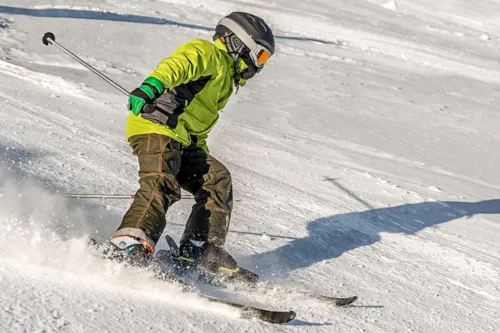Ski and snowboard safety: Helmet guide
Properly fitting helmets reduce the risk of ski and snowboard-related head injuries and help make those that happen less severe.
Skiing and snowboarding are exhilarating sports that require strength, endurance, and skill. Both are ideal for staying in shape during the winter, but they also carry the risk of injury. To stay safe, athletes need to use proper equipment, build strength and flexibility, and be aware of hazards on trails and runs.
Skiers’ and snowboarders’ injuries differ: Knee and lower leg injuries are more common among skiers; snowboarders more often injure their wrists and shoulders. Holding an arm out to break a fall can cause arm or shoulder injuries whether you’re on skis or a board. Skiers can injure a ligament on the inside of their thumb if they fall and their thumb catches on the strap of their pole. In both sports, falling or colliding with a tree or another person can result in broken bones or a head injury.

Properly fitting helmets reduce the risk of ski and snowboard-related head injuries and help make those that happen less severe.
Lessons can help you learn the basics of balance, turning, stopping, and preventing falls. Good instruction can emphasize the importance of warming up, cooling down, and taking regular breaks during a long day of activity.
It takes strength and agility to stay in control on the trail.
As the largest and most experienced pediatric and young adult sports medicine practice in the country, the Sports Medicine Division at Boston Children's combines personalized care with innovative treatment for each athlete we treat.
Our Sports Medicine team consists of sports medicine physicians, dietitians, physical therapists, podiatrists, athletic trainers, sports psychologists, and many others who collaborate in every aspect of our patients’ care and their recovery.
The Micheli Center for Sports Injury Prevention, part of the Sports Medicine Division, is dedicated to the prevention of sports injuries. Through our rehabilitation and strength training programs, we offer practical strategies that help young athletes reduce their risk of injury while enhancing their sports performance.